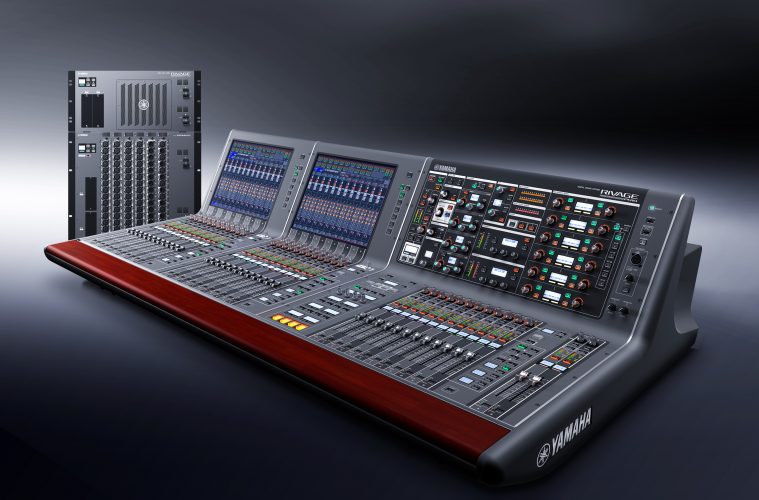As the world of professional audio continues its migration into the digital realm, many companies have jostled for an advantage on the long road to this technology becoming the standard. Although each manufacturer brings its own advantages, Yamaha continues to enjoy the loyalty of many audio engineers and musicians worldwide following several decades of advances in digital mixing, as it celebrates its 30-year milestone in the digital mixer field.
In 1987, the company unveiled the DMP7, a digital mixer that offered parametric EQ, internal effects, stereo compression and something called “scene memory,” which became an essential feature for every manufacturer. The ability to store and recall multiple mix setups and fader control meant the end of what’s commonly known as “marking the board,” which was a time-consuming task.
The first Yamaha digital mixer arose from a need on the digital musical instrument side of the pro-audio business. In the mid-1980s, a successful line of synthesizers utilized a new sound-generation technique, known as FM synthesis. The Yamaha DX7 synthesizer was among the most popular keyboard products of that time, and one of the derivatives was a rack-mount tone module series: the TX. Keyboardists wanted to layer the sounds of the DX7, and the TX816 was essentially eight independent DX7 engines in a rack-mount form factor, with each sound engine having its own discrete line output. The company wanted to provide a solution to allow keyboard players to combine all the layers of their sound patches from the tone modules easily, as well as recall them quickly.
According to John Schauer, Senior Technical Specialist for Yamaha Professional Audio, “The DMP7 represented a significant milestone: the company’s first digital mixer, which provided a solution not only for mixing in live and studio situations, but also for keyboard players.”
Subsequently, Yamaha produced 22 unique series of digital mixers, with the technology steadily winning acceptance in professional circles. Incorporating the latest feature developments, along with input from audio professionals who use the products, Yamaha digital mixers are now deployed in applications that range from stadiums to nightclubs and from professional recording facilities to home studios.
“Yamaha got an early start in the field of professional mixing consoles with its first PM Series analog mixer in 1972,” Nithin Cherian, Marketing Manager for Yamaha Professional Audio, recalled. “That led to a string of launches spanning four decades.” With the reliability of digital mixers improving, and as they proved more effective than analog, Yamaha’s segue into the digital realm was natural. The company further made a mark in the digital domain by pioneering many of the features now considered commonplace.
Let’s look back at the company’s 30-year digital mixer history, punctuated by key products.


